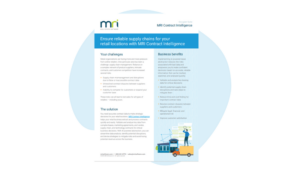GASB vs FASB: The key differences between new US lease accounting standards
In this article, we look at GASB vs FASB and highlight the major differences between the GASB 87 and ASC 842 lease accounting standards. It is not intended as a comprehensive listing of all contrasting points.
It likely came as good news for state and local government accountants that the Governmental Accounting Standards Board (GASB) delayed the effective date of its Statement No. 87 last week.
The 18-month postponement means those required to adopt the new lease accounting standard have until 2021 to prepare – the extra time granted due to the various and significant effects of the COVID-19 pandemic.
But, a note of caution; the extension, however welcome, should not be seen as an opportunity to push GASB 87 to the bottom of the to-do list. Implementing processes and systems to meet the new requirements, and then actually reporting to it, is a complex project. It’s something we’ve seen publicly listed companies struggle with when moving to FASB’s equivalent ASC 842 standard.
Indeed, governmental entities can take useful lessons from the private sector transition in terms of both successes and pain points. ASC 842 and GASB 87 are ultimately intended to achieve the same outcome – ensuring that organisations recognize their lease commitments on balance sheets. There are, however, differences to be aware of between the two – key examples of which are outlined here:
GASB vs FASB: The main differences
GASB vs FASB capitalization model
GASB 87: All leases are finance leases.
ASC 842: Leases are classified and accounting for as either operating leases or finance leases based upon an assessment of lease classification criteria.
GASB vs FASB short-term leases
GASB 87: Leases are not capitalized and are not disclosed.
ASC 842: You have the option of whether or not to capitalize. If a lease is not capitalized then the expense must be disclosed.
GASB 87: The short-term assessment must include the maximum possible lease term. That is, all possible extension/renewal periods are included in the lease term regardless of the probability that the lease will be extended.
ASC 842: The short-term assessment only includes renewal or termination options that are reasonably certain of being exercised. Additionally, a lease cannot be short-term if there is a reasonably certain purchase option.
GASB vs FASB ownership transfer
GASB 87: A contract that transfers ownership of the underlying asset to the lessee at the end of the contract generally is not accounted for as a lease, but instead is accounted for as a financed purchase, with a few exceptions for certain options.
ASC 842: A contract that transfers ownership of the underlying asset to the lessee at the end of the contract is accounted for as a finance lease.
GASB vs FASB separating components
GASB 87: As a general rule, lease and non-lease components (i.e. receive a service such as CAM) should be accounted for as separate contracts (i.e. non-lease components should not be capitalized as a ROU Asset but rather should be accounted for as a service contract). If it is not practicable to determine the price of the components in the contract then, on an exception basis, the non-lease components may be combined with the lease component and capitalized as a single lease component.
ASC 842: As an accounting policy election, non-lease components may be combined with the lease component and capitalized as a single lease component.
GASB vs FASB contingent lease incentives
GASB 87: Contingent lease incentives (e.g. contingent upon a future event such as constructing tenant improvements) are not included in the initial measurement of the lease liability.
ASC 842: Contingent lease incentives can potentially be included in the initial measurement of the lease liability based upon a company’s accounting policy that is consistently applied.
GASB vs FASB disclosures
GASB 87 disclosures are very similar to ASC 842, but there are some differences to note:
GASB 87: The maturity of the lease liability is presented separately for the next five years. After year five, the maturity is presented in five-year increments until the expiration of the latest lease.
ASC 842: The maturity of the lease liability is presented separately for the next five years. After year five, the maturity through the latest lease expiration is presented in one ‘and up’ bucket.
GASB 87: Disclosure requirement for other payments, such as residual value guarantees or termination penalties, not previously included in the measurement of lease liabilities.
ASC 842: This disclosure not specifically called out.
GASB 87: Disclosure requirement for the components of any loss associated with an impairment, such as the impairment loss and any related change in the lease liability.
ASC 842: Does not require the related change to the lease liability to be separately identified.
Transition methodology
GASB 87: There is only one transition method and that method requires all prior period financial statements that are presented to be restated to GASB 87. As an exception, prior period financial statements do not need to be restated if it is not practicable to do so.
ASC 842: There are two transition methods: (1) Modified Retrospective Comparative Period Method – essentially the same as the GASB 87. (2) Modified Retrospective Effective Date Method – Prospective-type transition, with no need to restate prior period financial statements.
Understanding these differences and the full scope of the GASB 87 standard will be key to successful adoption. Organisations have been given more time to prepare, and should make sure they use it to get the right processes and systems in place to make the transition as smooth as possible.
To learn more about how lease accounting software can help, watch the webinar here.
Take your Retail Success to the Next Level with MRI’s Contract Intelligence
With the growing competition from online retailers, retail organizations are grappling with the complexities of supply chain management. Managing a network of product suppliers, navigating intricate contracts, and staying ahead of customer demands po…

